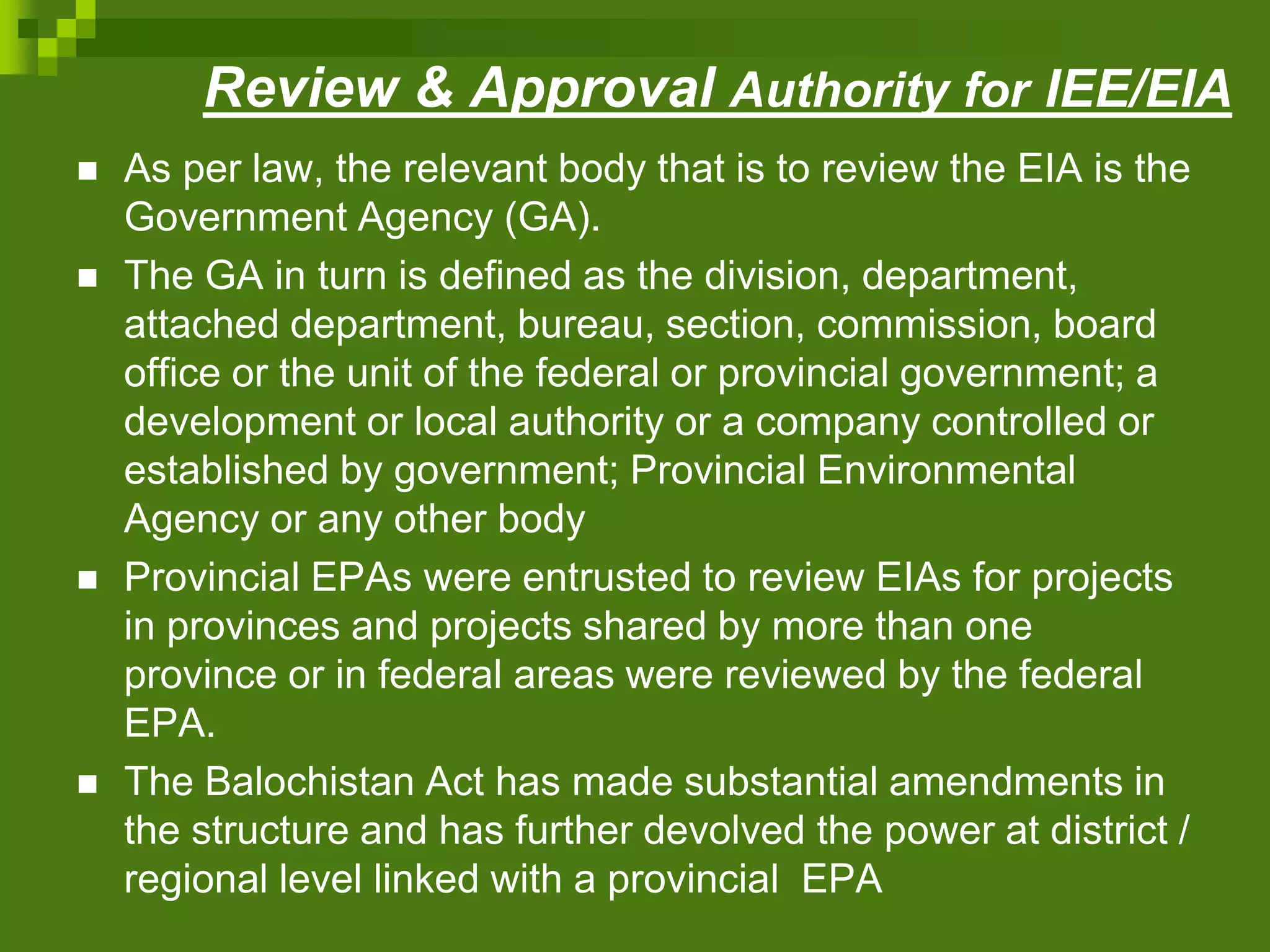The document provides an overview of environmental impact assessments (EIAs) from Pakistan's perspective. It discusses how EIAs were introduced in Pakistan in the 1980s and became mandatory in 1994. It outlines some of the key challenges with EIA implementation in Pakistan, including weak enforcement of regulations, limited public participation, and an incomplete project classification list. The document also notes that environmental protection is now handled at the provincial level in Pakistan since a 2010 constitutional amendment.




![EIA origin in Pakistan
Shortly after its creation in 1947, Pakistan adopted Lord Macaulay’s 1860 Penal
Code [covering all types of crimes, including against the environment] and
modified it when needed. In addition, separate legislation was promulgated for
addressing environmental issues from forest cutting to noise.
It was the cumulative effect of all factors plus a growing international concern for
the environment that Pakistan drafted a comprehensive law on the environment
in the mid-1970s.
on the other hand, it could not be made into the agenda of the Parliament for
years. As a last resort, the bureaucracy pushed this all through with a
Presidential Order, thus giving birth to the Pakistan Environmental Protection
Ordinance, 1983.](https://image.slidesharecdn.com/eia-pakistanperspective-150126124029-conversion-gate01/75/Eia-pakistan-perspective-5-2048.jpg)




















